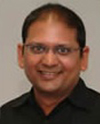Sustainable Microgrids for Energy-Poor Communities: A Spotlight on the Planning Dimensions
By Daniel Akinyele, Ramesh Rayudu and Richard Blanchard
Remote microgrids currently account for over 50 percent of the total installed microgrids worldwide. Such systems have a huge potential to electrify isolated parts of the world, but they have to be carefully planned to achieve a sustainable energy supply. This article presents the planning dimensions for microgrids in energy-poor communities. It underscores the framework necessary to design, develop, manage and ensure a long-term viability of the systems. Such a framework integrates the social, technical, economic, environmental and the policy perspectives, thus, providing a sound understanding of the processes and the stakeholders over the life cycle of the systems’ development.
About 20 out of 100 people in the global community still do not have access to a modern energy supply. Most of these people live in the Sub-Saharan Africa and South Asia. These factors, among others, made the United Nation in 2014 launch the Sustainable Energy for All (SE4All) initiative. SE4All aims to achieve universal access to modern energy supply, double the share of renewable energy and double energy efficiency measures. In addition, in 2015, the UN also produced the Sustainable Development Goals (SDGs), a 17-goal agenda to transform the world, creating a pathway for achieving global sustainable development by 2030.
One of these goals focuses on access to affordable and clean energy for all. These strategies are intended to advance the Millennium Development Goals (MDGs) that ended in 2015. However, if these targets are to be realized, huge investment in eco-friendly decentralized energy generation infrastructure will be needed to increase the global electricity access in the short- and medium-term.
The electric energy sector is continuously evolving worldwide. One current development is the gradual transition from centralized to decentralized energy generation technologies. This is constantly being demonstrated in different parts of the world both in on-grid and off-grid applications, i.e. microgrids. Interestingly, remote microgrids currently account for more than 50 percent of the total installed microgrids worldwide. Such systems have a huge potential to electrify isolated parts of the world, but they have to be carefully considered and planned by the energy designers, policymakers, governments, developers, and independent producers, especially in countries with appreciable energy resources.
The electric power industries around the world are progressively recognizing the relevance of microgrids. One of the reasons is that they serve as a key alternative for meeting people’s energy needs where there is no access to the electricity grid. In the not-too-distant future, such interest is expected to open new opportunities in developing countries that will lead to widespread use of renewable energy, such as wind, solar, water and biomass, and the storage systems. However, because microgrids based on renewable energy resources are different from the conventional energy systems with which most are familiar, the process of designing, planning, developing and managing such energy solutions requires new ways of thinking. One fundamental strategy for planning and ensuring sustainable microgrid systems for energy-poor communities is a user-centered approach. This approach is a pre-design process that considers the user requirements as the starting point and as one of the most critical aspects of the design tasks. A sound understanding of the design process from the users’ perspective is a requirement for achieving practical microgrid solutions.
Such an approach addresses one of the reasons several existing off-grid decentralized generation systems in some developing countries have failed. The energy models either have not appropriately included the users’ needs or have not taken their specifications into account. Detailed and accurate information about energy consumers is important. A field-based approach is an effective technique for obtaining such information. This includes a contextual inquiry, on-site surveys, interviews and observation. This approach allows interaction with the people that are involved. The information obtained then takes into account the available energy resources of the locations in designing suitable microgrids for the users. This process is typically a socio-technical dimension of the planning, as the users’ social characteristics form the basis for the technical analysis.
Traditionally, electricity system planning and development is approached as a technical and economic problem that considers both the technology and costs of the proposed energy models. This is currently the platform on which most existing renewable energy microgrid systems design are based, and it is an important aspect of the planning process. However, for successful energy solutions, planning and management requires more than the technical-economic analysis. The social aspect is also crucial. Thus, a third dimension is added, with a social analysis added to technology and economics.
Furthermore, because the social, the economic and the environmental analyses are central to sustainable development, it is also vital to consider the environmental performance of the proposed solutions. This creates a four-dimensional framework: social-technical-economical-environmental.
Economics identifies the cost-effectiveness of the solutions and the financial footing for the continuous operation of the systems, while a life cycle environmental impact assessment ascertains the extent to which the solutions can be eco-friendly. These three aspects must then be effectively integrated with the technical perspective if sustainable energy systems are to be developed.
These dimensions cut across the four stages of microgrid development - the pre-design, detailed design, implementation and post-implementation. However, if the desired social, technical, economical and environmental sustainability benefits are to be achieved, effective management of the energy systems in the post-implementation phase is critical. There cannot be a widespread application of microgrids in the absence of a sound policy and institutional framework.
A “PESTLE” approach provides an all-inclusive strategy for effective planning and management analyses: Political, Economic, Social, Technological, and Environmental. Such a model can provide a sound basis for better understanding and planning microgrids for isolated communities in developing countries. As part of the technical scheme, the following are also crucial for achieving sustainable solutions:
- Complying with global standards such as IEEE Std. 1562, 1013, 1361, 1561 and 1661
- Applying best practices
- Using standard/approved materials
- Using effective maintenance schemes
A holistic systems approach is needed for sustainable microgrid solutions that integrate the framework identified here through the full life cycle of the development.
For a downloadable copy of July 2016 eNewsletter which includes this article, please visit the IEEE Smart Grid Resource Center.
Contributors

Daniel Akinyele holds a B.E. (first class distinction) in electrical and electronic engineering from the University of Ibadan, Nigeria. He also holds an MS with Distinction in Renewable Energy Systems Technology from the Loughborough University, United Kingdom. Akinyele was a senior engineer at the National Agency for Science and Engineering Infrastructure (NASENI), Abuja, Nigeria – the only Federal government of Nigeria’s Agency with the mandate to create science and engineering infrastructure. While at NASENI, his tasks included solar photovoltaic system design and energy efficiency analysis. Subsequently, he joined the Department of Electrical and Information Engineering, Covenant University, Nigeria, as an assistant lecturer before he proceeded to Victoria University of Wellington, New Zealand for his doctorate degree programme. His thesis focuses on techno-economic and life-cycle impact analysis of solar photovoltaic microgrid systems for off-grid communities. He is registered by the Council for the Regulation of Engineering in Nigeria (COREN).

Ramesh K. Rayudu, IEEE Senior Member, holds a B.E. (First Class–Distinction) from Osmania University (India), an M.E. from University of Canterbury (NZ) and a PhD in AI and power systems engineering from Lincoln University (NZ). He has over 14 years of industrial work experience both in India and New Zealand. He was also involved in consultation work for several international firms in New Zealand, Australia, Singapore, Malaysia, India and the U.S. He is currently a senior lecturer at Victoria University of Wellington. His current research interests include power systems engineering, health monitoring, energy harvesting, and renewable energy systems, microgrids and grid integration analysis. Ramesh has written over 70 publications for journals, invited articles and papers for magazines and conferences and has won two best presentation awards. He was co-awarded the IPENZ 1999 Fulton Downer Silver Medal for Best Paper. He is an active member of the IEEE PES NZ Central Section.

Richard Blanchard is a lecturer in renewable energy at CREST, the Centre for Renewable Energy Systems Technology within the School of Mechanical, Electrical and Manufacturing Engineering at Loughborough University, United Kingdom. He teaches bioenergy and sustainable energy systems, which are the areas of his research interests. Blanchard is working on two biogas projects in India: rural hybrid energy and enterprise systems and biomethanation of food waste. Both projects are co-funded by the UK and Indian Governments. In addition, he is working on a solar nano-grid project in Kenya and Bangladesh, as well as supervising PhD students from Malaysia, Ecuador, Iran, Malawi and Thailand. In the 2011, with colleagues, he was the recipient of the prestigious Institution of Civil Engineers Baker Medal for work on microgeneration technology.
To have the Bulletin delivered monthly to your inbox, join the IEEE Smart Grid Community.
Past Issues
To view archived articles, and issues, which deliver rich insight into the forces shaping the future of the smart grid. Older Bulletins (formerly eNewsletter) can be found here. To download full issues, visit the publications section of the IEEE Smart Grid Resource Center.




